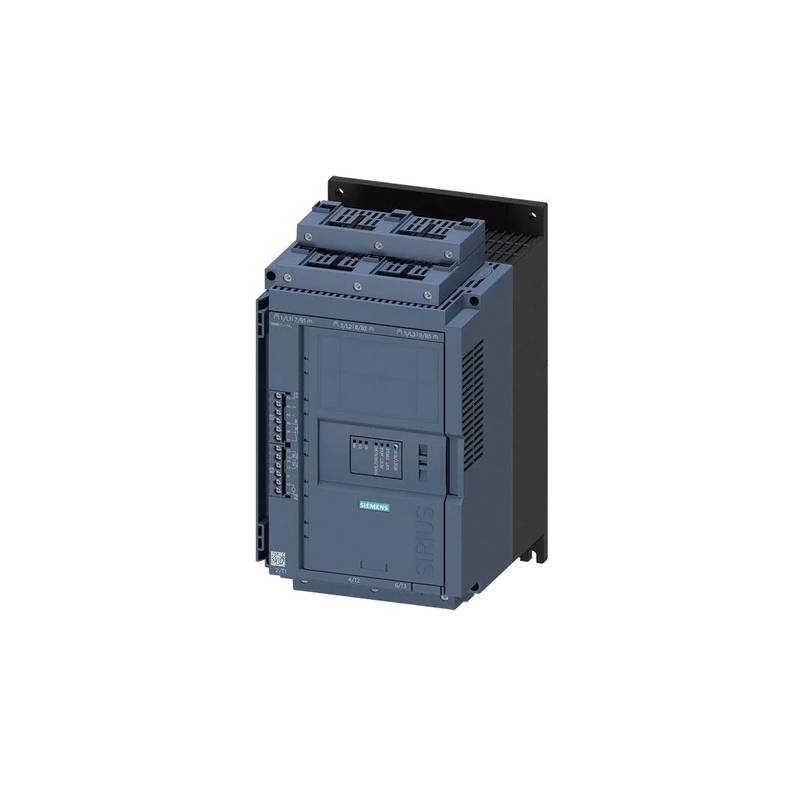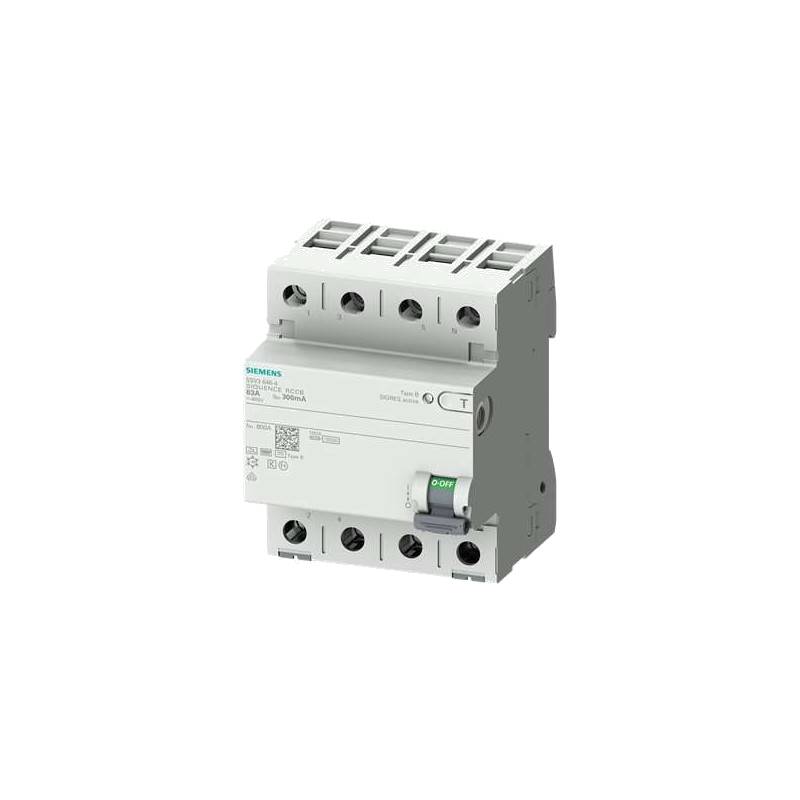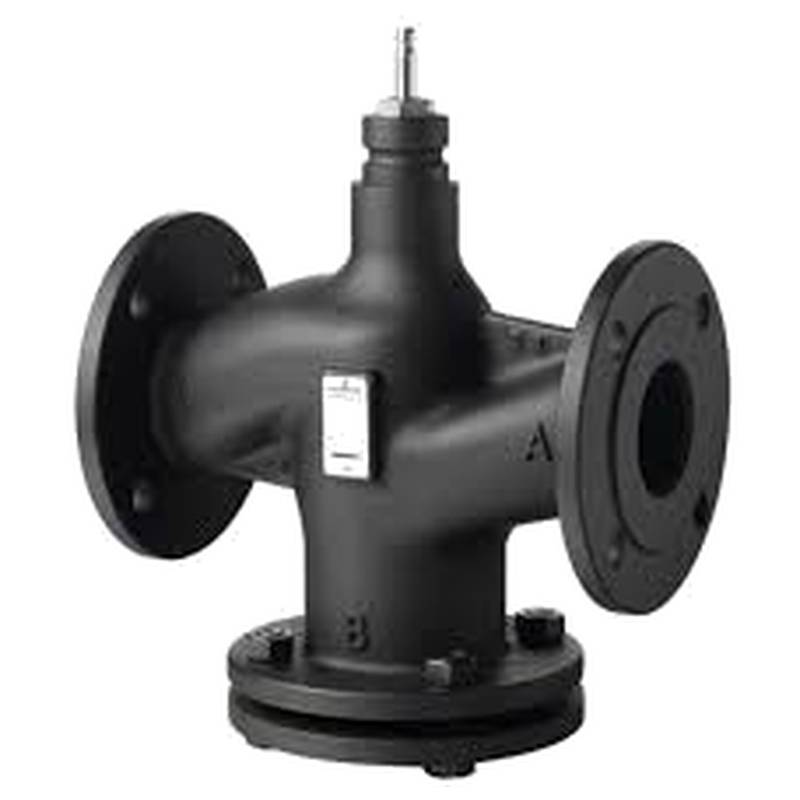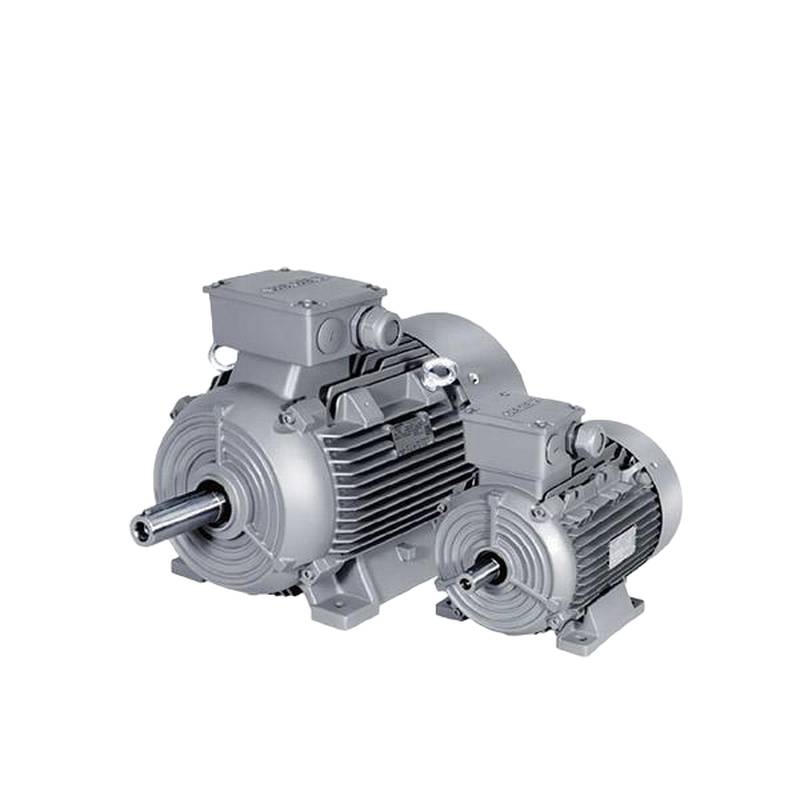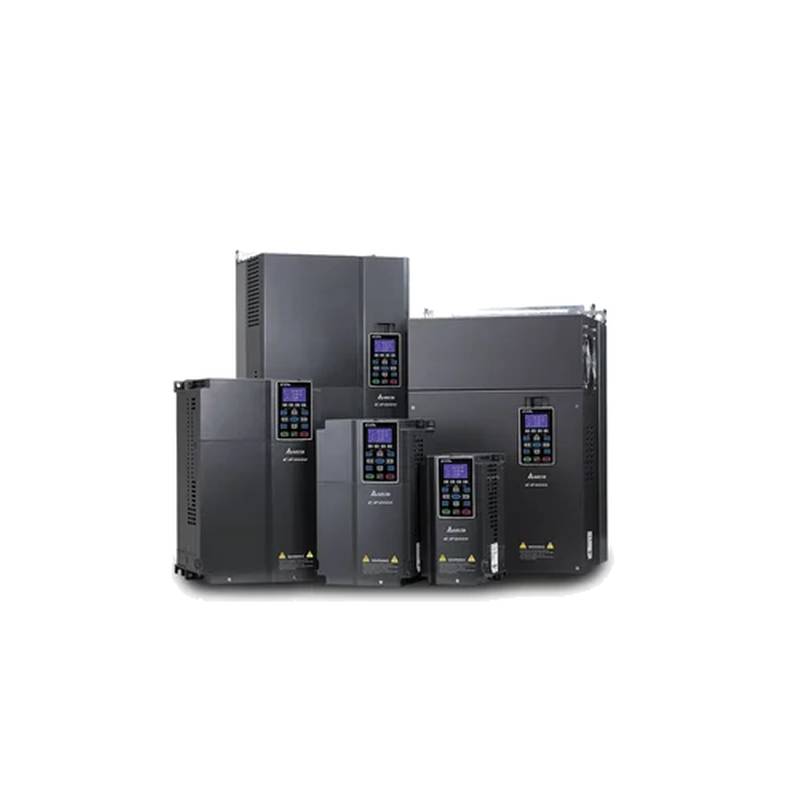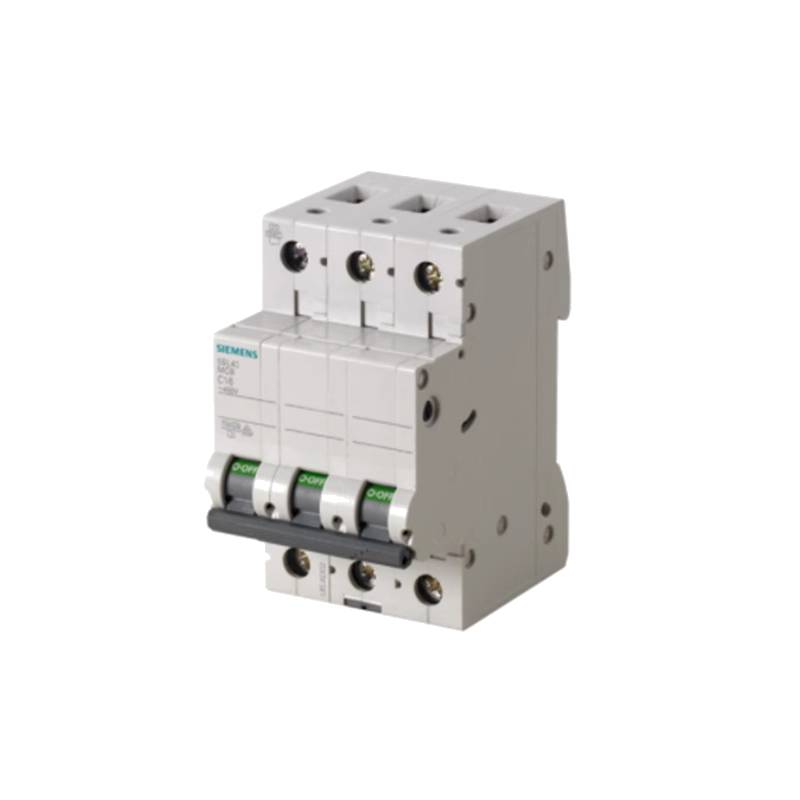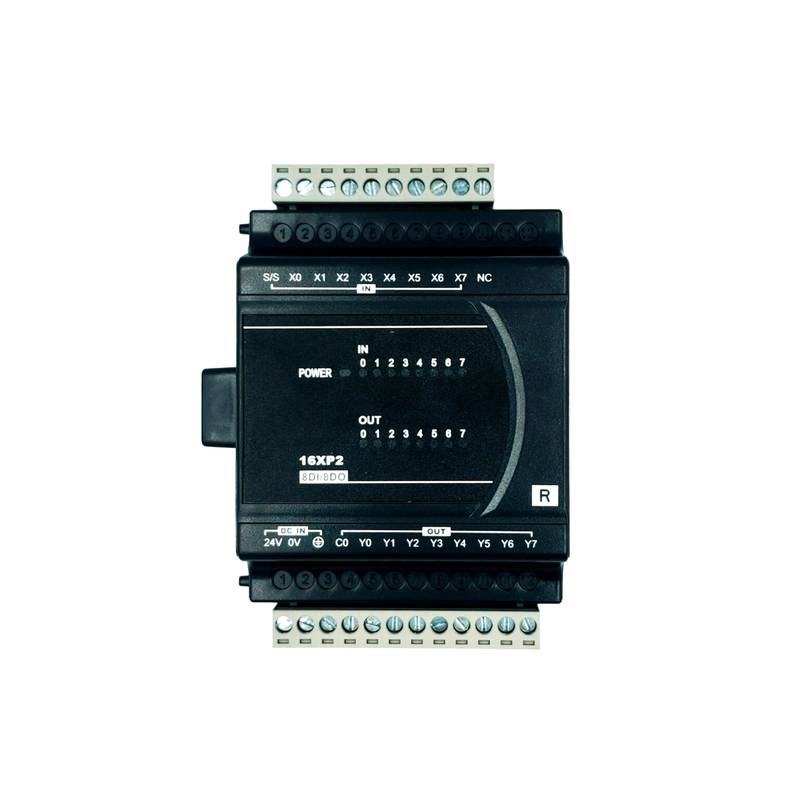
The Siemens 5SY6516-7CC is a high-performance double-pole miniature circuit breaker (MCB) designed for robust power distribution protection in demanding industrial environments. This 1P+N (one pole plus neutral) device, rated at 16A, offers superior trip characteristics and enhanced safety features, making it a critical component for safeguarding electrical circuits against overcurrents and short circuits. Its advanced arc quenching technology and precise tripping mechanisms ensure reliable operation and minimize downtime, positioning it as a leading solution for applications requiring unwavering protection and operational continuity.
Product Specifications
| Feature | Specification |
| :--------------------- | :------------------------------------------ |
| Manufacturer | Siemens |
| Product Series | 5SY |
| Model Number | 5SY6516-7CC |
| Poles | Double Pole (1P+N) |
| Rated Current (In) | 16 A |
| Rated Voltage (Un) | 230/400 V AC |
| Breaking Capacity (Icn)| 6 kA |
| Tripping Curve | C |
| Frequency | 50/60 Hz |
| Terminal Type | Screw Terminal |
| Mounting Type | DIN Rail (35 mm) |
| Ambient Temperature | -25°C to +45°C |
| Protection Class | IP20 |
| Compliance Standards | IEC/EN 60898-1, IEC/EN 60947-2 |
Core Features & Market Positioning
The Siemens 5SY6516-7CC distinguishes itself through its robust construction and adherence to stringent international standards, including IEC/EN 60898-1 and IEC/EN 60947-2. Its Type C tripping curve provides excellent protection for circuits with moderate inrush currents, commonly found in industrial settings with motors and transformers. The 6 kA breaking capacity ensures it can safely interrupt fault currents, a crucial factor for preventing catastrophic equipment damage and ensuring personnel safety. Siemens' reputation for reliability and innovation in industrial automation and power distribution further solidifies the 5SY6516-7CC's market position as a dependable choice for critical infrastructure. The dual-pole design, encompassing both the active conductor and the neutral, offers a comprehensive protection solution for 1P+N configurations, crucial in many European and international power systems.
Key Application Scenarios
This 16A double-pole MCB is ideally suited for a wide array of industrial power distribution applications. It excels in protecting circuits within control panels, switchgear, and distribution boards that supply power to machinery, lighting systems, and auxiliary equipment. Its suitability extends to environments requiring reliable circuit interruption for single-phase loads with higher startup currents, such as pumps, fans, and small electric motors. The 5SY6516-7CC is a staple in manufacturing plants, process automation facilities, and building management systems where consistent power delivery and robust fault protection are paramount. Its use ensures operational continuity by preventing nuisance tripping while effectively isolating faults.
Practical System Integration Guidance
Integrating the Siemens 5SY6516-7CC into existing or new electrical systems is straightforward due to its standard DIN rail mounting and screw terminal connections. For installation, ensure the main power supply is de-energized. Connect the line conductor to the designated pole (typically marked 'L') and the neutral conductor to the 'N' pole terminal. The load wiring should then be connected to the output terminals accordingly. Proper conductor sizing is essential to prevent overheating and ensure the MCB operates within its rated parameters. Before energizing, verify all connections are secure and that no foreign objects are present within the device. Always adhere to local electrical codes and regulations during installation.
Operation and Risk Mitigation
The Siemens 5SY6516-7CC operates by automatically interrupting the circuit when an overcurrent (overload or short circuit) exceeds its calibrated threshold, indicated by the tripping curve. This prevents damage to downstream equipment and reduces the risk of fire hazards associated with persistent overcurrents. In the event of a trip, the operating lever will move to the 'OFF' position. To reset, first identify and rectify the cause of the fault. Then, move the lever fully to the 'OFF' position and subsequently to the 'ON' position to restore power. Avoid attempting to reset a breaker repeatedly without addressing the underlying fault, as this can be indicative of a serious issue and poses a significant safety risk.
Scalability & Long-Term Value
The Siemens 5SY6516-7CC, as part of the broader Siemens industrial product ecosystem, offers excellent long-term value through compatibility and potential for system expansion. Its standardized form factor and adherence to IEC standards ensure seamless integration with other Siemens circuit protection devices, busbars, and enclosure systems. This compatibility facilitates easy upgrades and modifications to power distribution networks. While this specific model is a fixed-rated device, its reliability and durability contribute to reduced maintenance costs and extended operational life. For future enhancements, Siemens offers a comprehensive range of smart circuit breakers and monitoring solutions that can be integrated into IIoT platforms for predictive maintenance and advanced energy management.
Frequently Asked Questions
What is the purpose of a double pole MCB like the Siemens 5SY6516-7CC?
A double pole MCB simultaneously interrupts both the live and neutral conductors of a circuit. This provides a more complete isolation of the electrical load compared to a single pole breaker. It is essential for applications where complete disconnection is required for safety or maintenance.
The Siemens 5SY6516-7CC ensures that when the breaker trips, both the power supply and the neutral path are broken. This prevents current from flowing back through the neutral conductor, which can be a hazard. Such devices are often mandated by electrical codes for specific types of circuits.
This comprehensive disconnection is vital for maintaining electrical safety standards and preventing accidental energization of equipment when work is being performed. It offers a higher level of protection in installations that require it.
How does the C-type tripping curve of the 5SY6516-7CC protect industrial equipment?
A C-type tripping curve is designed to handle moderate inrush currents from inductive loads. These loads, such as motors and transformers, briefly draw more current when they start up. The C-curve allows for these temporary surges without tripping unnecessarily.
However, the breaker will still trip rapidly during short-circuit events, typically within milliseconds. This ensures that high-fault currents are quickly interrupted, minimizing damage to sensitive industrial machinery and wiring. It strikes a balance between preventing nuisance tripping and offering rapid fault protection.
For Siemens 5SY6516-7CC, the C-curve makes it suitable for general industrial applications where motors, transformers, or fluorescent lighting circuits are common. It provides a reliable protection level against both overload and short-circuit faults.
Can the Siemens 5SY6516-7CC be used in residential applications?
While the 5SY6516-7CC meets international standards, its typical application is in industrial and commercial settings. Residential applications often use different types of MCBs designed specifically for home electrical systems and codes.
The double pole configuration (1P+N) is common in many European residential installations for circuits like showers or specific appliances. However, compatibility with local residential electrical codes and the overall system design must be confirmed.
For residential use, it is always recommended to consult with a qualified electrician to ensure proper selection and installation of circuit protection devices that comply with all relevant building regulations.
What is the significance of the 6 kA breaking capacity?
The 6 kA breaking capacity indicates the maximum fault current the MCB can safely interrupt without sustaining damage. In industrial environments, fault currents can be very high due to the proximity of power sources.
A higher breaking capacity ensures the circuit breaker can reliably disconnect the circuit during a short circuit. This prevents arcing, fire, and damage to the breaker itself and the electrical system. The 5SY6516-7CC's 6 kA rating is suitable for many standard industrial distribution circuits.
Ensuring the breaking capacity of the installed MCB exceeds the potential prospective fault current at the installation point is a fundamental safety requirement. This rating is critical for overall electrical system integrity and personnel protection.
How do I reset a tripped Siemens 5SY6516-7CC?
To reset a tripped Siemens 5SY6516-7CC, first identify and eliminate the cause of the trip. This could be an overload or a short circuit. Ensure the fault condition is resolved before attempting a reset.
Once the fault is cleared, push the operating lever of the MCB fully to the 'OFF' position. Then, move the lever back up to the 'ON' position to restore power to the circuit. If the breaker trips again immediately, there is likely still an unresolved fault.
Do not force the lever or attempt to bypass the tripping mechanism. If the breaker repeatedly trips, it indicates a persistent problem that requires professional diagnosis and repair by a qualified electrician.
What are the environmental operating conditions for this MCB?
The Siemens 5SY6516-7CC is designed to operate within a specific range of ambient temperatures. It can function effectively in temperatures from -25°C to +45°C.
It is crucial to install the MCB within this temperature range to ensure its reliable performance and lifespan. Extreme temperatures outside this range can affect its tripping characteristics and potentially lead to premature failure.
Additionally, the device has an IP20 protection class, meaning it is protected against solid objects greater than 12.5 mm but not against water. It should be installed in a dry, protected environment, typically within an electrical enclosure.
How does the 1P+N configuration differ from a standard two-pole breaker?
A 1P+N configuration, like in the 5SY6516-7CC, switches both the live conductor and the neutral conductor simultaneously. This ensures complete isolation of the circuit. It is common in systems where the neutral is solidly earthed.
A standard two-pole breaker typically switches two live conductors, often found in 240V split-phase systems or for switching both lines of a three-phase load. The neutral conductor might be left permanently connected or switched separately.
The 1P+N design ensures that even if the neutral wire carries current, it is disconnected along with the live wire, providing enhanced safety in specific electrical network architectures.
What are the implications of using a Type C curve for motor starting?
Type C MCBs are suitable for circuits with moderate inductive loads, such as motors. They are designed to tolerate the temporary high inrush current that occurs when a motor starts up.
If a motor's inrush current exceeds the tripping threshold of the Type C curve, the breaker will trip. For larger motors with very high startup currents, a Type D curve or a motor-rated circuit breaker might be more appropriate.
The Siemens 5SY6516-7CC with its Type C curve offers a good compromise for many common motor applications, preventing nuisance tripping during startup while maintaining short-circuit protection.
How do I wire the Siemens 5SY6516-7CC for a 1P+N circuit?
For a 1P+N circuit, connect the incoming live (line) conductor to the designated 'L' terminal of one pole, and the incoming neutral conductor to the designated 'N' terminal of the other pole. The outgoing live wire to the load connects to the 'L' output terminal, and the outgoing neutral wire connects to the 'N' output terminal.
Ensure that the supply and load conductors are correctly identified and sized for the 16A rating of the breaker. The terminals are typically screw-type, requiring the conductor to be stripped and inserted before tightening the screw firmly.
Always de-energize the circuit before making any connections. Verify all wiring is secure and in accordance with local electrical codes and safety standards. Proper wiring is crucial for the safe and effective operation of the MCB.
What standards does the Siemens 5SY6516-7CC comply with?
The Siemens 5SY6516-7CC complies with key international and European standards for circuit breakers. These include IEC/EN 60898-1, which covers domestic and similar applications, and IEC/EN 60947-2, which pertains to low-voltage switchgear and controlgear.
Adherence to these standards ensures the product has undergone rigorous testing for safety, performance, and reliability. It guarantees that the MCB will function as intended under various fault conditions and operational stresses.
These certifications provide confidence to specifiers, installers, and end-users that the Siemens 5SY6516-7CC meets the stringent quality and safety requirements expected in industrial power distribution.
















